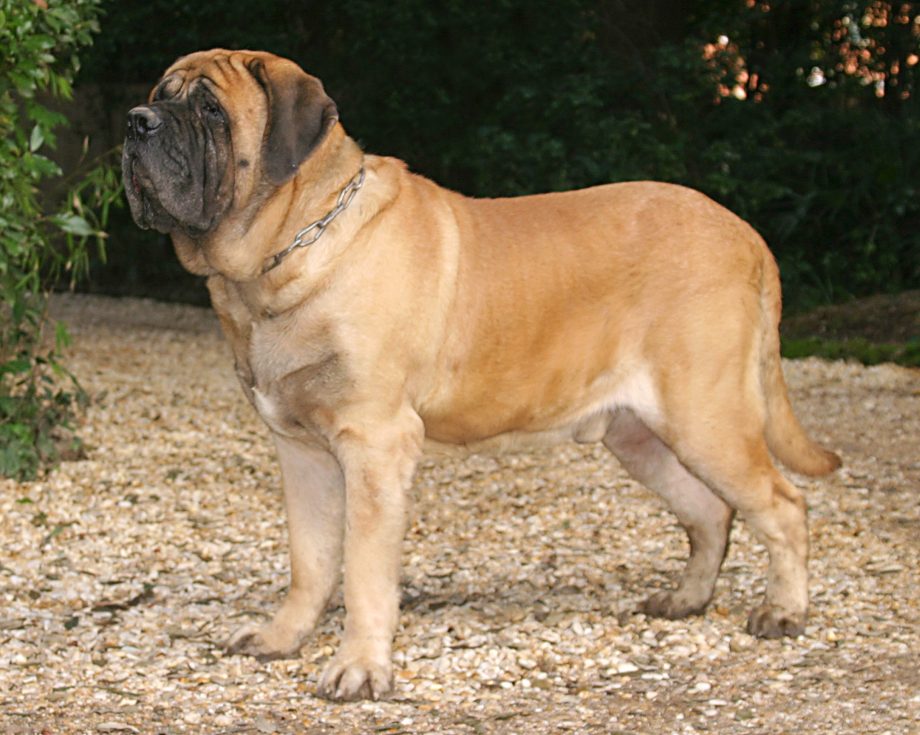The Mastiff, also known as the Old English Mastiff, is a large and powerful dog with an ancient heritage dating back thousands of years.
They are wonderfully imposing-looking dogs, a picture of power and muscle, and weighing as much as 90 kgs. They have a large heavy head with a short muzzle and wrinkled forehead, drooping jowls and a black mask around the eyes and nose. The eyes are small and brown, and the ears are small and dark and hang downward. The Mastiffs coat is short, straight and coarsened typically fawn, apricot or brindle. These huge, powerful dogs are dignified and good-natured and are truly loving, gentle and calm with their family. They will also get on with older children with good early socialisation but are not recommended for younger children, mostly because of their size. With their strong guarding instincts, this is a dog that is very protective of its family and territory. This can make it wary and suspicious of anyone and anything, making early socialisation super important. As a rule, Mastiffs are generally not suitable to be housed with other pets, although careful introductions can work, although caution should be taken. Mastiffs are pretty laid back and happy to lounge around the home, although benefit from regular daily exercise of up to an hour a day. With their large drooping jowls, this is a breed that will drool. It also tends to snore. This is a giant of a dog, with an overriding good nature. However, its strength and zealous guarding instincts, make this a breed better suited to a strong and experienced owner.

History
Mastiff-type dogs have an ancient history. It is reported that when the Romans invaded Britain in 55BC they found the inhabitants had huge mastiff-type dogs, stronger and more courageous than their own large dogs. The Romans took some of these mastiffs back home with them and used them for fighting wild animals in the Coliseum. Over the years the breed has been used as a guard dog, hunter of wolves, and for bear and bull baiting.





